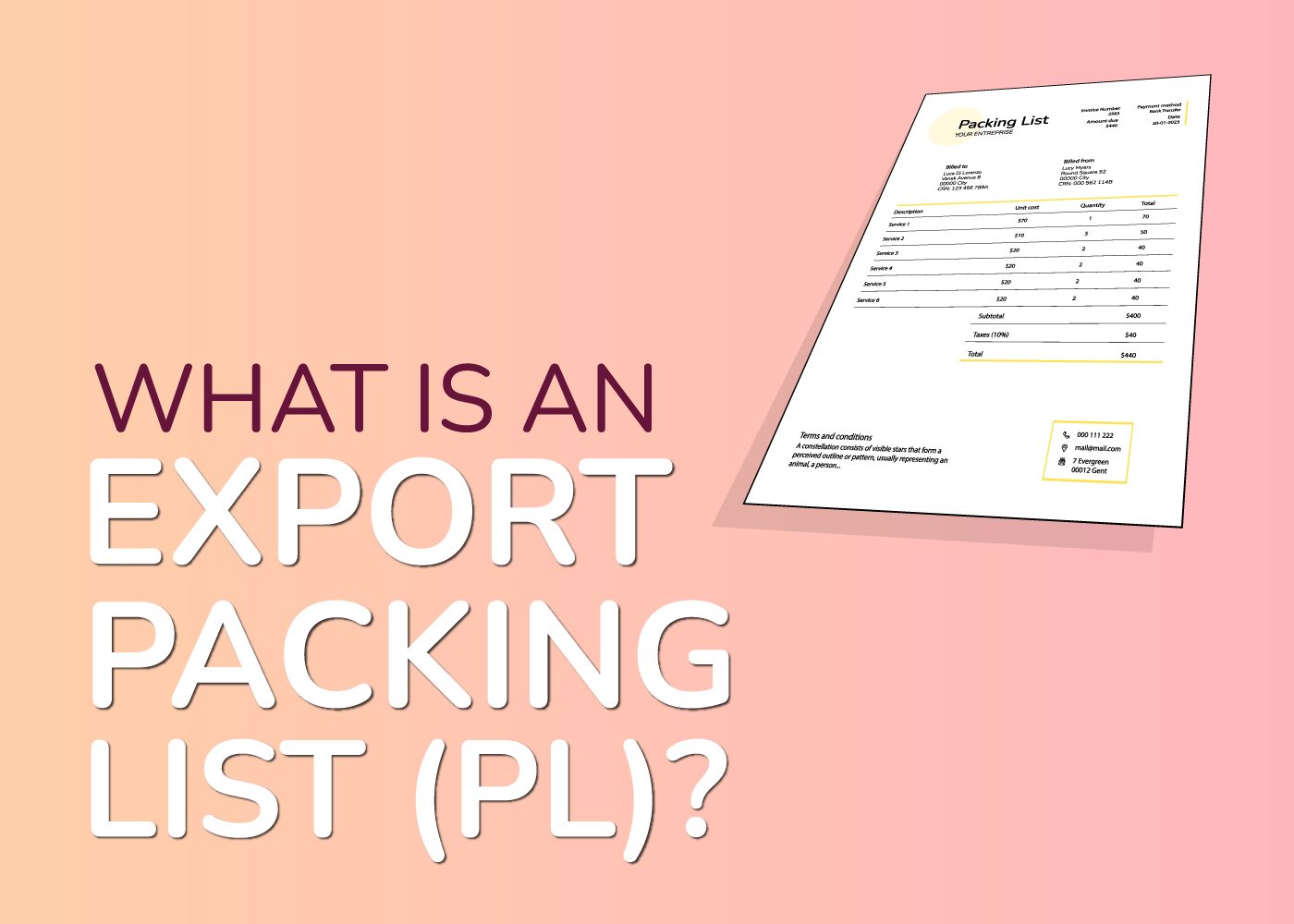What is an Export Packing List (PL)?
An export packing list (PL) is a crucial shipping document used during international trade. It provides detailed information about the contents of a shipment and is typically enclosed in a waterproof packet, securely attached to the outside of the package. Unlike invoices or bills of lading, an export packing list focuses solely on the contents of the shipment rather than its financial aspects. A typical packing list includes:
- Quantity of items
- Description of goods
- Weight and dimensions
It’s important to note that pricing information is not required on a packing list.
When is a Packing List Used?
A packing list is essential whenever you send a shipment internationally. This document plays a vital role in keeping all involved parties informed—whether it’s transport agencies, customs officials, or the final recipient. For example, Customs Officials will often reference the packing list to verify the cargo contents, ensuring everything matches the description provided. Meanwhile, freight forwarders and shippers rely on it to assess the total weight and volume of the package, which helps in calculating shipping costs and organizing storage.
In some countries, the export packing list may even serve as a customs declaration, particularly if it accompanies other export documents like the commercial invoice. Its accuracy is therefore critical to avoid potential shipping delays, fines, or shipment refusals.
Why Do I Need a Packing List?
The packing list serves as an informational document that guides the safe handling of your shipment. It is an important tool for ensuring transparency throughout the shipping process. From the initial loading of the goods to final delivery, the packing list keeps everyone aligned, reducing the risk of errors. It can also be a useful document for insurance purposes in the event of lost or damaged goods during transit.
Ensuring that your packing list contains correct and complete information is essential to avoiding costly mistakes, customs issues, or shipment delays. Every detail, from weight to product description, must match the actual contents of your package and other accompanying documents.
Where can I get a packing list document?
You can obtain a packing list template from your logistics provider or freight forwarder. These firms often offer blank templates that you can fill in with the relevant details for each shipment. However, for businesses looking for more efficient, modern solutions, you can download a free PDF packing list template online.
Additionally, you can use digital platforms like edgectp.com, which allow you to generate both paper and electronic versions of the packing list. These online tools simplify the process, ensuring all required information is entered correctly while keeping records of each transaction. Try the free 30-day trial to see how it can streamline your shipping documentation process.
Conclusion
In conclusion, an export packing list is a vital document in international shipping, offering transparency and efficiency for all parties involved in the logistics chain. Ensuring the accuracy of the packing list not only helps you avoid costly delays and fines but also builds trust with transport agencies and customs officials. Whether you choose to manually fill out a template or utilize a digital solution like EdgeCTP, having a reliable and accurate packing list will streamline your export operations, giving you peace of mind throughout the shipping process.


